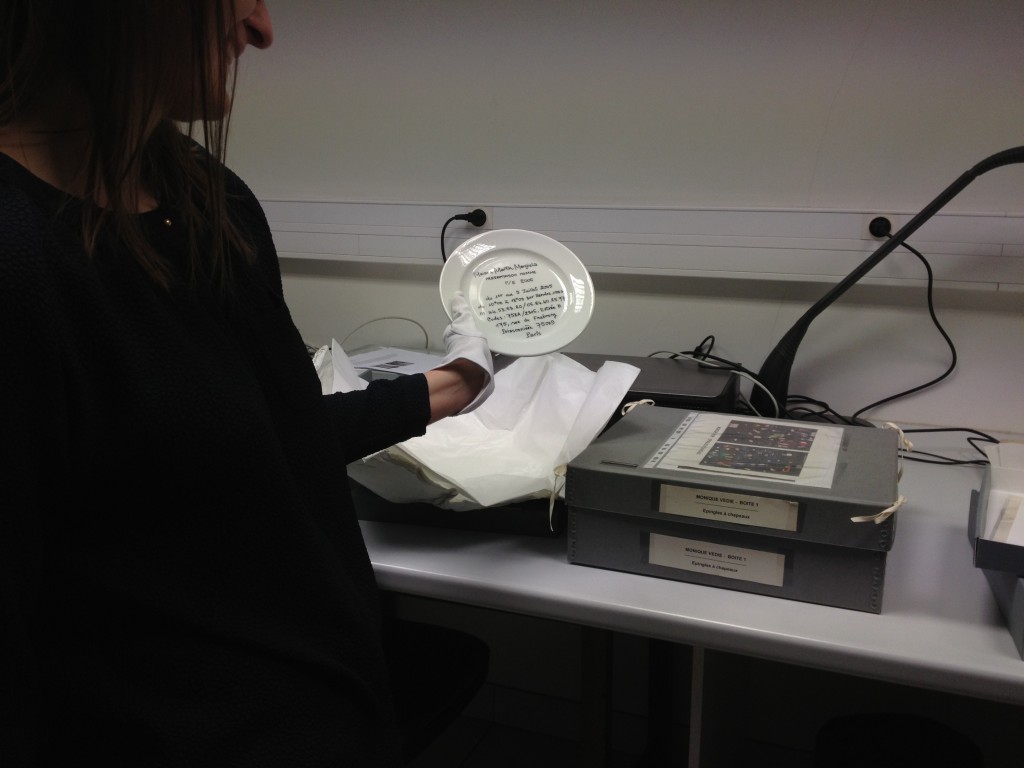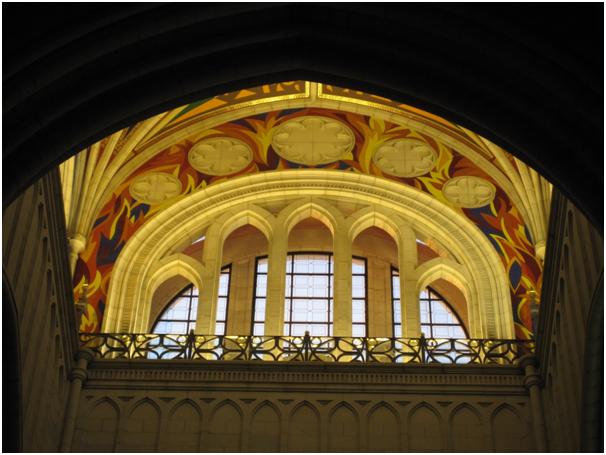Fancy volunteering in the visual arts? Student Rosie Clarke (BA (hons) History of Design, Culture and Society) gives a taste of her experiences at Brighton’s Fabrica.
Over the last year or so I’ve been involved with some of the events and exhibitions which happen behind closed doors in the cool, quiet atmosphere of an old church on Duke Street. You may have been inside Fabrica, or you may have walked straight past like I had countless times before, but now I urge you to stop and have a look.
It’s a wonderful building, with walls so thick that even the busiest Saturday Brighton tourists are muffled, and a roof that vaults high into shafts of sunlight. Fabrica hosts contemporary visual art exhibitions and holds all manner of events, from films to workshops to talks. It’s an organisation which commissions art works in relation to the building itself, creating a feeling that is unique to Fabrica.
My role as a volunteer means helping out during exhibitions: I talk to the public about the current artists on display and the work that Fabrica does elsewhere. So far I’ve been involved with The Blue Route (by Kaarina Kaikkonen), Resonance (Susie Macmurray), and A Cold Hand on a Cold Day (Jordan Baseman). When I applied to become a volunteer at Fabrica I wanted to learn how a gallery functions, meet some new people, and perhaps be inspired in my own creativity. However there is so much more to being a Fabrica volunteer than just standing in a gallery.
One great opportunity was being able to contribute to The Response, a magazine put together by Fabrica volunteers alongside each exhibition, featuring our own artwork or writing. It was great to be a part of the editing team and have the chance to get my work read by hundreds of visitors. We responded to Kaarina Kaikkonen’s The Blue Route, which used reclaimed shirts to project ideas about loss and longing. You may have seen some of Kaarina’s work wrapped around the clock tower in Churchill Square. We used the shirt as a starting point, and the magazine content grew from there.
During the set-up of Resonance I found out how to put together an installation, by spending a few days stitching reams of sheet-music into cones for the final piece – getting to know many interesting people along the way. It felt like time had stopped, if not for the fact that every time I glanced up there would be another huge new limb of the paper sculpture suspended above, the product of our labour. This photo was taken halfway through…
There are also plenty of evening events that are held in conjunction with the current exhibitions, such as panel discussions and film screenings. In October I invigilated for “Nothing Lasts Forever (Nor Should It)”, a frank and heartening discussion about death and dying to compliment A Cold Hand on a Cold Day. The series looked at ways of dying (inevitable as it is) and raised the question, why are we so averse to talking about death? I remember one of the speakers describing pain, as “a vessel of grief.” Its moments such as this that I appreciate the depth and essence of Fabrica’s work, which goes so much further than the visual arts.
So within all these experiences, I’ve learnt that by engaging with unfamiliar things there’s a lot to be discovered. The best aspect of Fabrica is their willingness to encourage new ideas, and allow volunteers such as myself to take on more responsibility. If you’d like to get involved too, you can download an application form from Fabrica’s website, or come along to one of their events to find out more. Fabrica’s next exhibition features Jacob Dahlgren’s On Balance and it runs from 5 April to 26 May 2014.






















